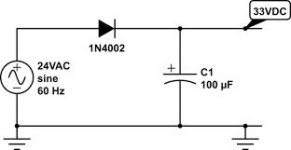Rustaholic
New member
Wizbang Battery Desulfator Solar Wind EV Marine Storage
Wizbang Desulfator (18)
List Price: $34.95
Price: $24.99 + Free Shipping
You Save: $9.96 (28%)
18 reviews
That is not a link and you did not answer my question,,,,
Do you KNOW it works as good as this one we can build from scrap and a cheap Radio Shack diode?
